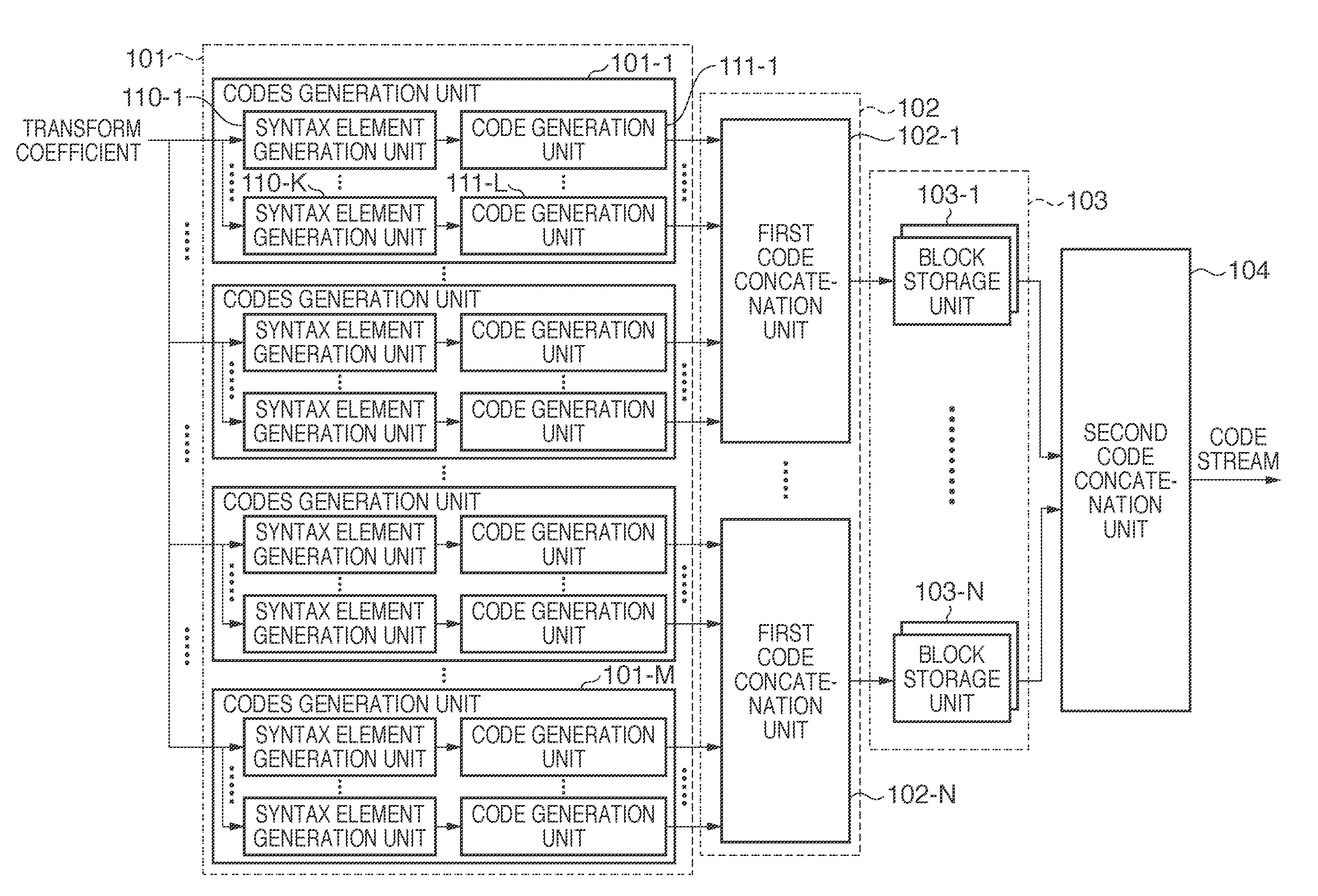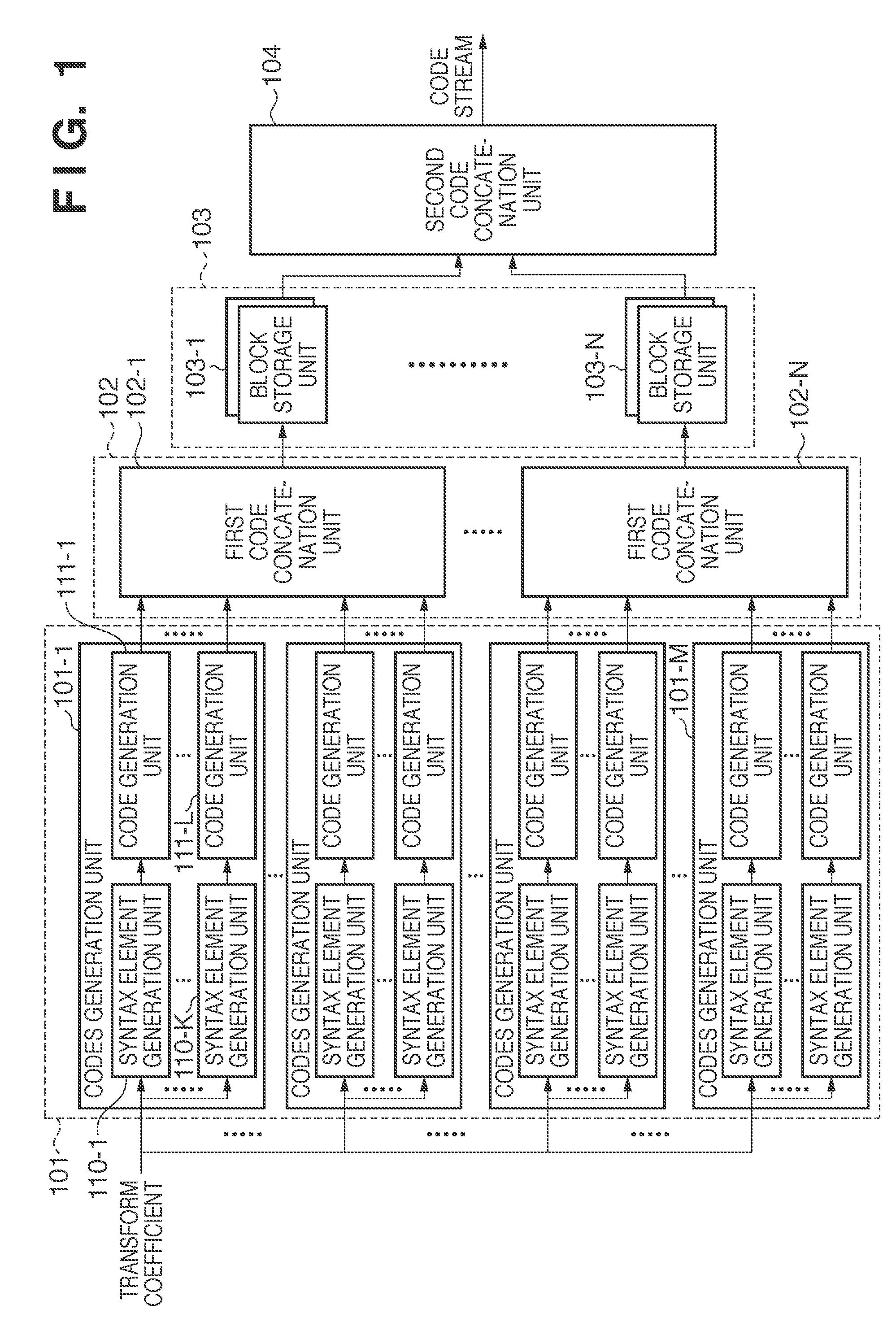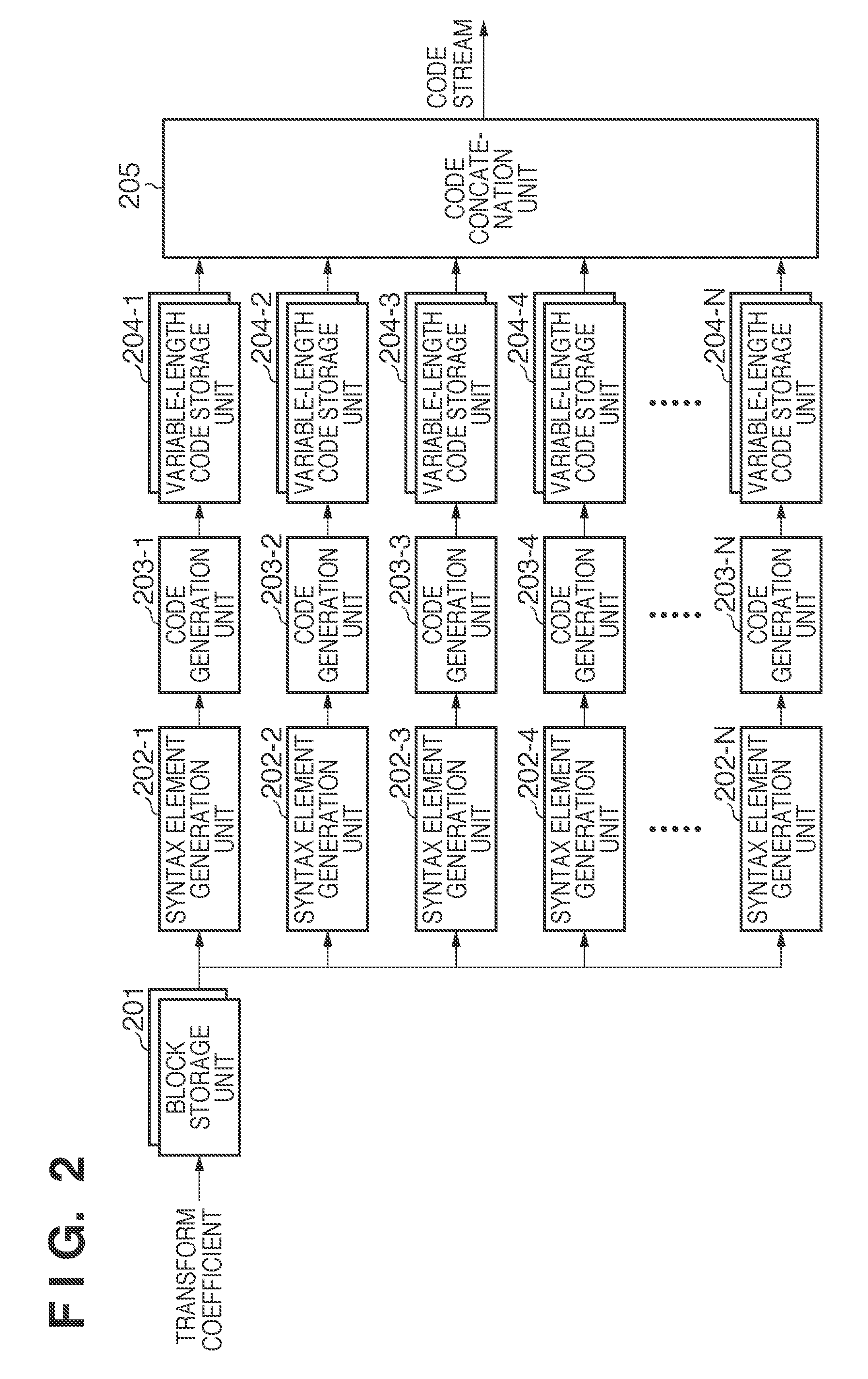Image coding apparatus, control method thereof, and storage medium
a coding apparatus and image technology, applied in the field of image data coding technique, can solve the problems of increasing the processing time of code concatenation and the apparatus cannot benefit from the effect of encoding, and achieve the effect of reducing the influence of the number of syntax elements
- Summary
- Abstract
- Description
- Claims
- Application Information
AI Technical Summary
Benefits of technology
Problems solved by technology
Method used
Image
Examples
first embodiment
[0031]As an industrially applicable form of the present embodiment, first described is an image processing apparatus having a function for encoding an image and decoding the encoded image. Typical images subjected to encoding include an image read out of an image sensor of a digital camera or a digital camcorder, or an image received through a network. For a typical apparatus, a digital camera or the like may be given as an example.
[0032]Hereinafter, a digital camera having a configuration shown in FIG. 4 is described as an example. An image of an image-capturing target is formed on an image sensor 402, such as CCD, CMOS sensor or the like, through a lens 401. The image sensor 402 converts the formed image to an analog signal, and transmits the analog signal to an A / D converter 403. The A / D converter 403 converts the analog signal, which has been received from the image sensor 402, to a digital signal. A memory controller 407 acquires, from the A / D converter 403, the converted digit...
second embodiment
[0071]Next described as a second embodiment is a case where the present invention is applied to entropy coding according to the JPEG XR coding scheme.
[0072]According to entropy coding of the JPEG XR coding scheme, a transform coefficient on which coefficient prediction has been performed is divided into higher-bit data and lower-bit data. While variable-length coding is performed on the higher-bit data, the lower-bit data is processed (fixed-length coding) as fixed-length data (is also referred to as a fixed-length code, FLEXBITS). In the JPEG XR coding scheme, a MB is further divided into smaller blocks, and coding is performed in units of these blocks (FIG. 12). Further, code streams are defined (FIG. 13) for alternately inserting a variable-length code (VLC in FIG. 13) and a fixed-length code (FLC in FIG. 13) in block unit (Block in FIG. 13).
[0073]The second embodiment is shown in FIG. 9. The second embodiment has a configuration of FIG. 1, where M=4 and N=2. The four codes gener...
PUM
 Login to View More
Login to View More Abstract
Description
Claims
Application Information
 Login to View More
Login to View More - R&D
- Intellectual Property
- Life Sciences
- Materials
- Tech Scout
- Unparalleled Data Quality
- Higher Quality Content
- 60% Fewer Hallucinations
Browse by: Latest US Patents, China's latest patents, Technical Efficacy Thesaurus, Application Domain, Technology Topic, Popular Technical Reports.
© 2025 PatSnap. All rights reserved.Legal|Privacy policy|Modern Slavery Act Transparency Statement|Sitemap|About US| Contact US: help@patsnap.com



